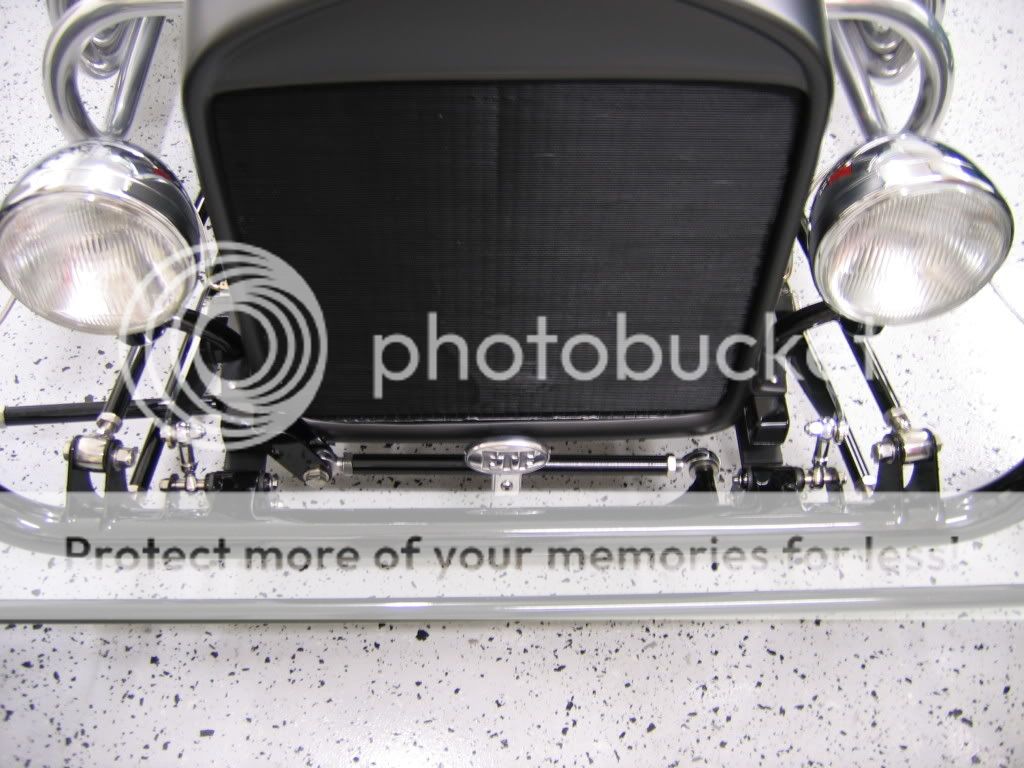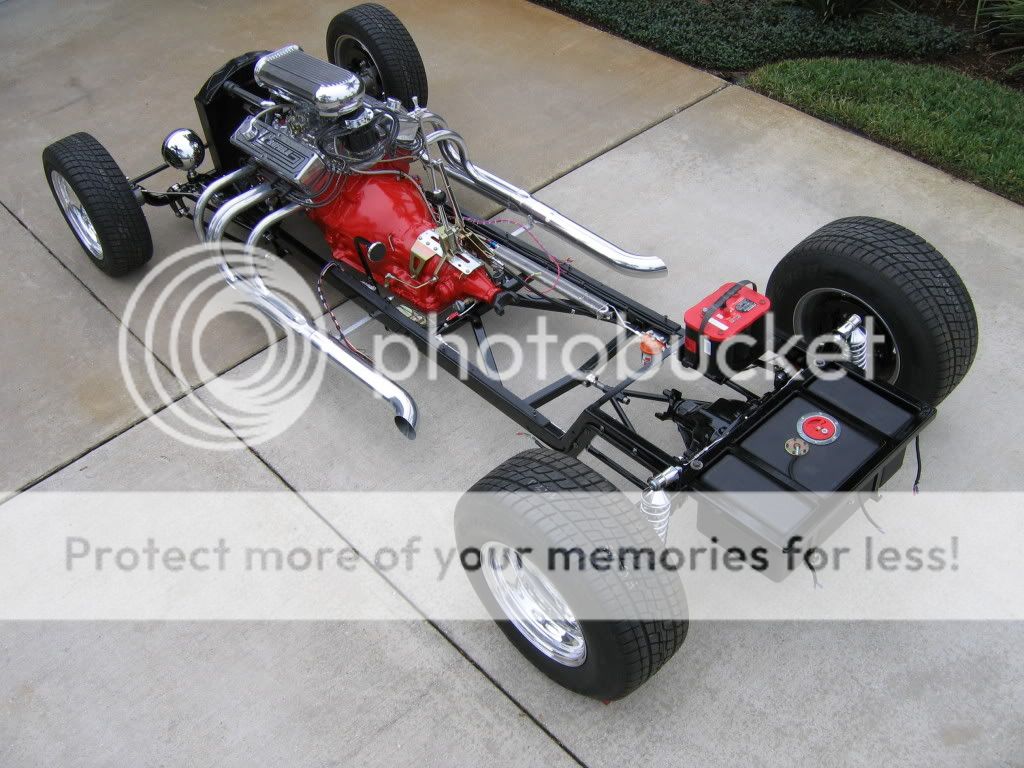Lee,
One reason for the very short movement of the front suspension on your rig is the fairly stiff front spring, but a more important one is that you have radious rods that effectively make the front axle a sway bar. (One side cannot come up or go down unless the other side does the same.) With radious rods, since caster changes as the axle moves up and down, the front axle must twist to accomodate up and down movement of just one side of the front axle, making the axle a big sway bar. Therefore, the movement when one front wheel drops in a hole or runs over an alligator (lot's of those on Florida hiways, right?) is transferred to the rear suspension, and the whole frame twists. Then, if you have radious rods on the rear, the frame is put into a real twisting contortion as the front tries to twist it one way and the rear says no way. (This is called "frame stacking".) Since these frames are pretty stiiff, nothing much gives and you see almost no movement at the front shocks, instead, just a harsher ride. Actually, the tires have to take up most of the suspension travel on bumps / pot holes.
In normal smooth hiway driving, there is very little reason for movement, so nothing bad is noticed, and no severe stresses are induced into the frame and radious rod mounting points. It's those pot holes, alligators, angle driveways, and such that give cause for concern, and where stresses are the greatest. I actually had a neighbor at one point with a 'T' bucket that couldn't drive into his driveway unless he took a run at it, because one rear wheel would lift off the ground and spin when one front wheel hit the drive and raised up. He switched to 4 bar on the rear and had no further problems with enterring his driveway, (but the frame still rotated with the front axle). That made a believer out of me.
Tex Smith's book "How to build real hot rods" has a great writeup on this and is much superior to anything I could ever write on it. Tex is a pretty well respected and savy guy in the rodding world... The net is, put a 4 bar on it and you will see a lot freer movement of the suspension, hence a better ride, and those 'O' rings will ride much further up the shaft. If anyone is interested and it's legal, I'd be happy to copy Tex Smith's explaination into the forum.. (Mike, is that legal?)
Remember, with suspension, the ideal is a very soft springy suspension, that is then dampened by the shocks (dampers for Gerry). (Think older Buick, but with better shocks.

) This makes for the best ride, but not nessesarily the best handling, like on corners, for example, so we add sway bars for that. Front and rear axles (especially tubular front and all solid rears) don't make very good sway bars, they are way too stiff. Radious rods were a much better idea back when frames flexed a lot, but still not the best idea. Sure, they work and lot;s of people get away with them for years, but they are a compromise at best. With radious rods front and rear, it's a given that the suspension won't move much relative to the frame, this should be expected, and is not a surprise at all.
Not just my humble opinion, but Tex Smith's opinion too..
Corley
PS Did you know that the term "4 bar" was trade marked by Pete and Jake's?
PS/2 Not really trying to open the 4 bar debate, just explain why Lee sees very little front suspension movement.






